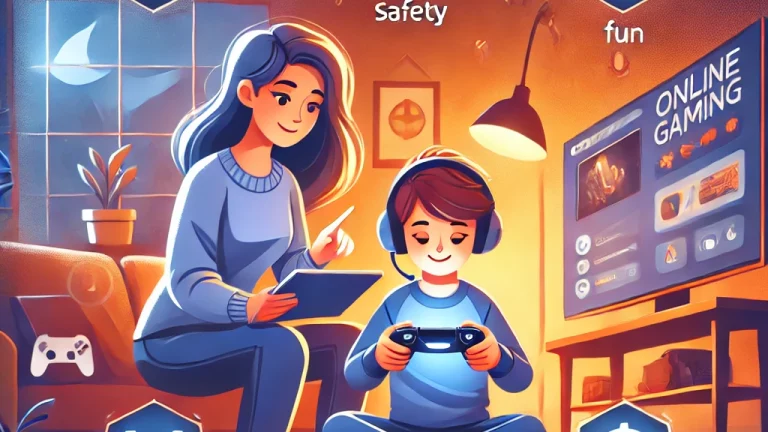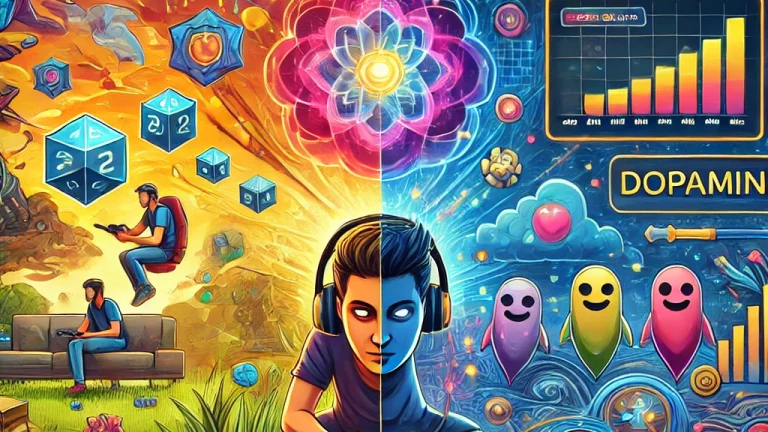
Parental Guide to Online Gaming: Ensuring Fun and Safety for Kids
Introduction: The Rise of Online Gaming for Kids
Online gaming has become a popular pastime for kids of all ages, offering a mix of entertainment, social interaction, and even educational benefits. However, as gaming becomes more accessible through smartphones, tablets, and consoles, it also brings potential risks that parents need to address. Striking a balance between fun and safety is crucial to ensuring that children can enjoy online gaming responsibly.
This guide provides parents with practical tips and insights to navigate the world of online gaming and help their kids have a positive and secure experience.
Understanding Online Gaming: The Basics
To effectively guide your child, it’s important to understand the basics of online gaming, including the different types of games and platforms available:
- Types of Games:
- Multiplayer Online Games: These include popular titles like Fortnite, Minecraft, and Roblox, where players interact with others in virtual worlds.
- Educational Games: Games designed to teach skills such as math, science, or language in a fun, interactive way.
- Mobile Games: Casual games available on smartphones and tablets, often featuring in-app purchases.
- Common Platforms:
- Consoles like PlayStation, Xbox, and Nintendo Switch.
- PCs and laptops.
- Mobile devices such as iPads and smartphones.
- Features of Online Gaming:
- Live Chat: Many games include voice or text chat options, allowing players to communicate with friends and strangers.
- In-Game Purchases: Items like skins, upgrades, or extra lives can be purchased, sometimes leading to unexpected expenses.
- Player Interaction: Online games often involve playing with or against other players, which can be a source of fun but also introduces risks like cyberbullying or inappropriate content.
Benefits of Online Gaming for Kids
Online gaming isn’t all bad—it offers several advantages when managed properly:
- Cognitive Development: Many games improve problem-solving skills, hand-eye coordination, and strategic thinking.
- Social Skills: Multiplayer games teach teamwork and communication as kids collaborate with others to achieve objectives.
- Creativity: Games like Minecraft allow kids to build and create, encouraging creativity and imagination.
- Stress Relief: Playing games can provide a healthy outlet for relaxation and stress relief after school or other activities.
Risks Associated with Online Gaming
While online gaming has benefits, it also comes with potential risks that parents should be aware of:
- Exposure to Inappropriate Content: Some games or player interactions may expose children to violent, explicit, or age-inappropriate material.
- Cyberbullying: Online games can be a platform for bullying, with players sometimes facing harassment or negative comments.
- Privacy Concerns: Kids may unknowingly share personal information that could put their safety at risk.
- Addiction: Excessive gaming can lead to unhealthy habits, such as neglecting homework, physical activity, or sleep.
- Financial Risks: In-game purchases and loot boxes can lead to unexpected expenses, especially if kids have access to payment methods.
Tips for Parents: Ensuring Fun and Safety
To protect your child while allowing them to enjoy online gaming, follow these practical tips:
- Set Age-Appropriate Boundaries:
- Choose games that are suitable for your child’s age by checking their ratings (e.g., ESRB or PEGI).
- Monitor the content to ensure it aligns with your family’s values.
- Establish Time Limits:
- Set clear rules about how much time your child can spend gaming each day.
- Use built-in parental controls on devices to enforce these limits automatically.
- Educate About Online Safety:
- Teach your child not to share personal information, such as their name, address, or school, with other players.
- Explain the importance of using strong passwords and protecting their gaming accounts.
- Enable Parental Controls:
- Use parental control settings on consoles, PCs, and mobile devices to block inappropriate content and limit in-game purchases.
- Review privacy settings to ensure your child’s profile is not publicly visible.
- Monitor Interactions:
- Keep an eye on who your child is interacting with in online games. Encourage them to play with friends they know in real life.
- Be vigilant for signs of cyberbullying or negative interactions and address them promptly.
- Encourage Open Communication:
- Foster an environment where your child feels comfortable discussing their gaming experiences.
- If they encounter something troubling, make sure they know they can come to you without fear of punishment.
- Be Involved:
- Play games with your child to better understand their gaming habits and preferences.
- This involvement can also be a great way to bond and share fun experiences.
Recognizing Warning Signs of Problematic Gaming
It’s essential to recognize when gaming is becoming a problem for your child. Warning signs may include:
- Neglecting schoolwork or other responsibilities.
- Changes in mood or behavior, such as irritability or withdrawal.
- Spending excessive time gaming, even at the expense of sleep or meals.
- Complaints of physical discomfort, such as eye strain or wrist pain.
If you notice these signs, it may be time to reassess your child’s gaming habits and seek professional help if necessary. You will find good games on this site https://1winua.com.ua/.
Recommended Tools and Resources
Several tools and resources are available to help parents manage their child’s gaming activities:
- Parental Control Apps: Apps like Qustodio, Bark, and FamilyTime allow parents to monitor screen time, block inappropriate content, and track activity.
- Gaming Platforms’ Built-In Tools: Most gaming platforms, such as Xbox, PlayStation, and Steam, offer parental controls to manage settings.
- Online Safety Guides: Websites like Common Sense Media and Internet Matters provide reviews and advice for parents on age-appropriate games and digital safety.
Conclusion: Balancing Fun and Safety
Online gaming can be a positive and enriching experience for kids when approached with care and awareness. By setting boundaries, monitoring activity, and maintaining open communication, parents can help their children enjoy gaming safely and responsibly.
The key is to stay informed and involved, ensuring that gaming remains a fun and beneficial part of your child’s life. Together, parents and kids can navigate the world of online gaming with confidence, turning potential risks into opportunities for growth and connection.

